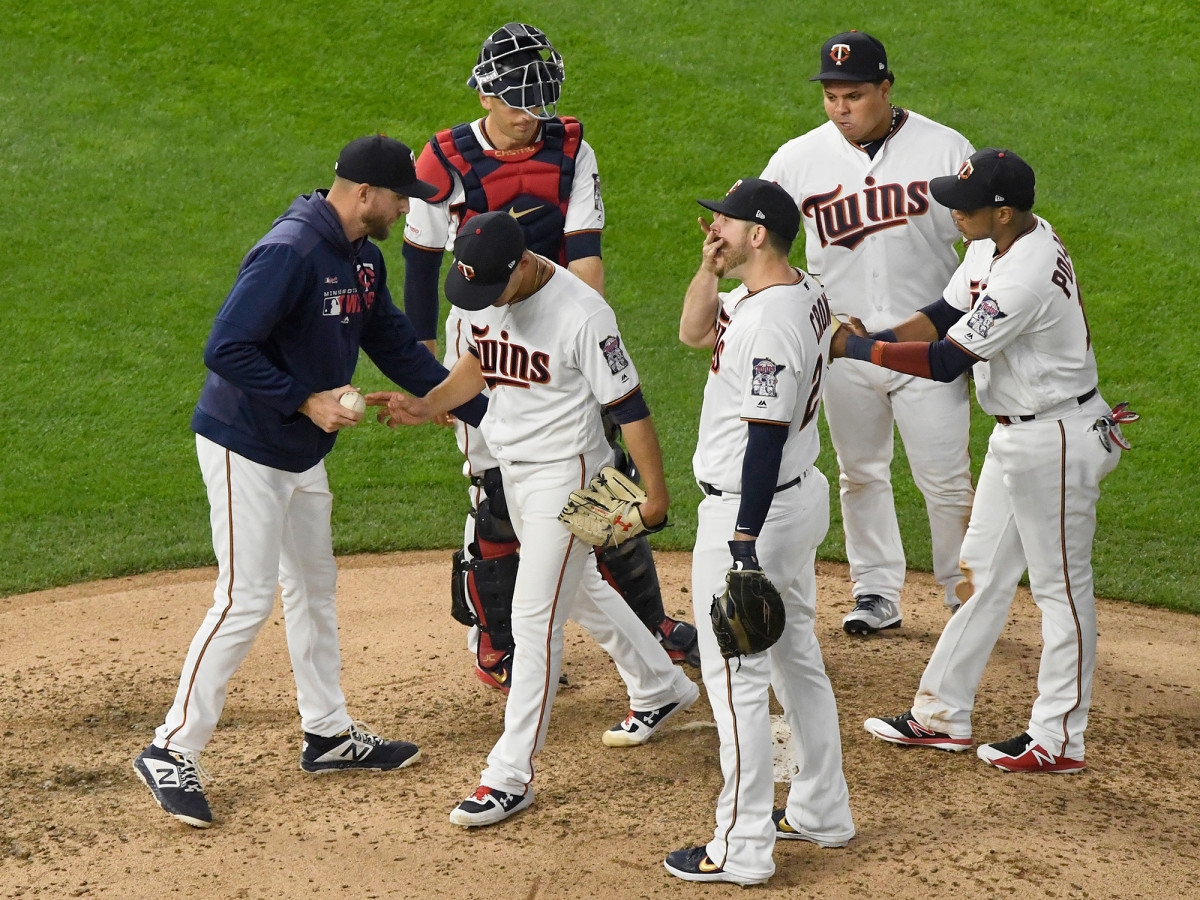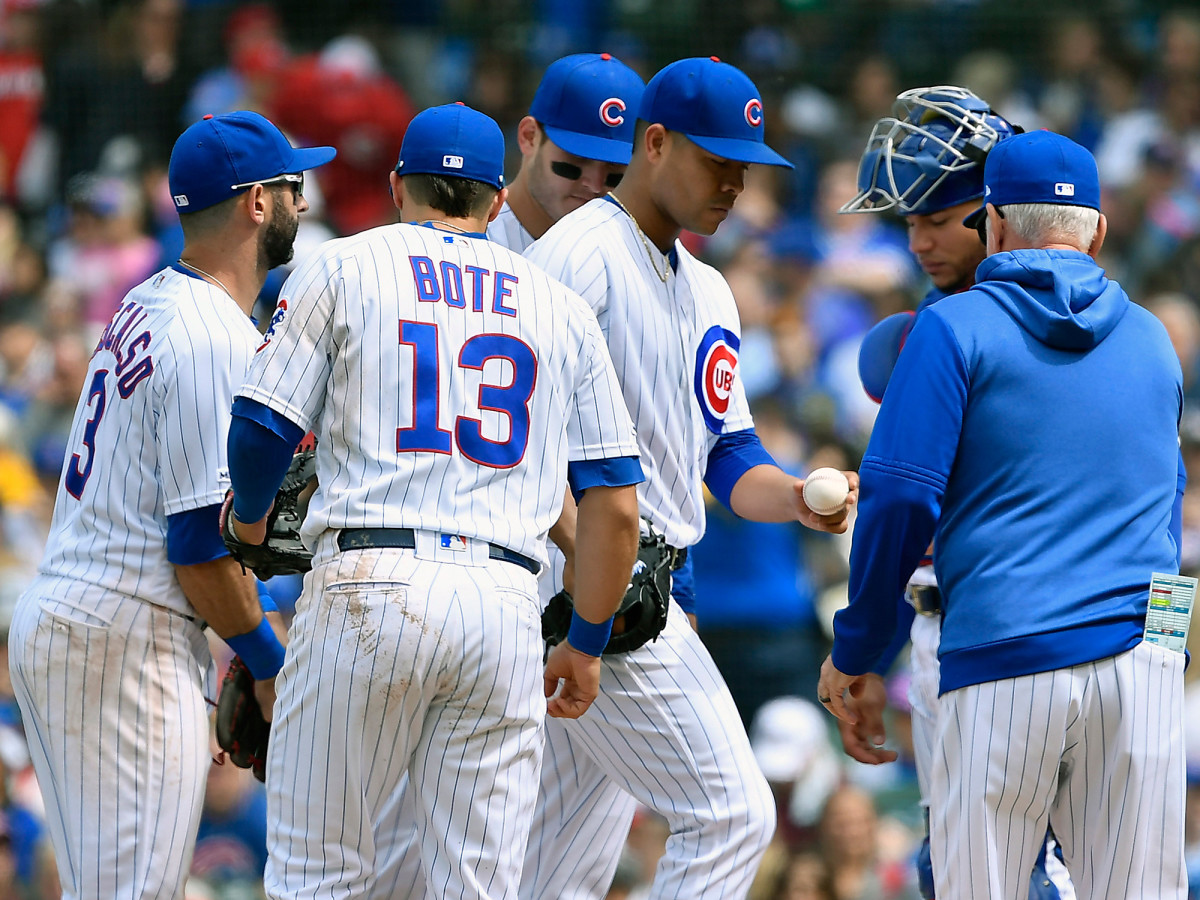The Slow Death of the Proven Closer

This story appears in the June 3, 2019, issue of Sports Illustrated. For more great storytelling and in-depth analysis, subscribe to the magazine—and get up to 94% off the cover price. Click here for more.
On the afternoon of June 13, 1973, in the seventh inning of a game between the Indians and Rangers in Cleveland, Texas manager Whitey Herzog turned to a 22-year-old righthander with a 3–14 career record named Don Stanhouse. With Texas clinging to a 3–1 lead, Stanhouse recorded the last nine outs of the game and earned his first major league save. The team that season would go on to a Rangers-record 105 losses and set the record for the most pitchers with a save, but no matter: Stanhouse was so excited over recording a save that, according to the book Seasons in Hell, on the team’s commercial flight to Baltimore after the game he “prowled the aisles, autographing paper napkins and stuffing them into the shirt pockets of various passengers who had no idea who Stanhouse was or what convention he and his bizarre cronies were headed to.”
Such prestige associated with the save is withering. From Austin Adams to Kyle Zimmer, Dakota Hudson to Montana DuRapau, Kyle Bird to Brad Hand, Colten Brewer to Tony Sipp, Jake Jewell to Ryan Dull, and Kyle Crick to Tony Watson, major league teams are using more relievers than ever before. This year more relief pitchers appeared in a game before Memorial Day than did in the entire 1998 season.
This expanding inventory of arms applies even to what’s thought of as the highest leverage of circumstances: the save.
Over the past four seasons, as analytics became mainstream and pitching development exploded, more teams have de-emphasized the “proven closer” in favor of drawing from the volume of relievers to close games. In 2015, a record 21 closers saved 30 games or more. That number fell to 16 in ’16 and to 11 in each of the next two years. Meanwhile, the number of pitchers who secured at least one save has increased every year for the past five seasons, hitting a record 165 last season, including 43 with 10 saves or more, another record.
“Early in my career you felt that having a proven closer was a position you needed to fill going into a season,” says Twins general manager Thad Levine, who has been an executive in the big leagues since 1999. “It was like having a second baseman. You needed a closer, or else the thinking was you were not going to compete deep into the season.
“As the game has evolved teams have become much more creative. Teams that have aspirations for the playoffs don’t necessarily think, ‘We need a closer.’”

The Twins are one of those many teams. Minnesota went to spring training with no pitcher with more career saves than the 24 of Blake Parker, who had been nontendered by the Angels. The Twins signed Parker, 33, to a one-year, $1.8 million contract, eschewing the active saves leader, seven-time All-Star Craig Kimbrel, who remains unsigned. (The Twins are among several teams monitoring Kimbrel, who is likely to sign shortly after the June 3 draft, when teams no longer will lose a draft pick for signing the free agent.)
Minnesota put its pitching staff in the hands of a rookie manager, Rocco Baldelli, 37, who had been major league field coordinator with the Rays, and a rookie pitching coach, Wes Johnson, 47, the first major league pitching coach hired directly from college coaching. “We had five guys on the roster who had some experience in the ninth, but no one who was a bona-fide closer,” Levine says. “But when you marry that up with a very creative pitching coach and a manager who may have come from one of the most creative shops in baseball, we felt confident in how this staff would manage a 12- to 13-man pitching staff, especially a field staff that is very willing to work with our advanced analytics team.”
Through 50 games, Minnesota stormed to the best record in baseball with the help of a deep, diversified bullpen. The Twins used eight relievers in save situations, with four of them picking up saves. The righthanded Parker (eight saves) and lefthanded Taylor Rogers (four) are the most favored save choices for Baldelli. Their combined ERA is 1.23. Minnesota relievers have converted 88% of save chances, the best rate in the majors. “We’re employing the best pitcher to match up according to the situation,” Levine says. “We’re not valuing the save. We have not been attentive to saves. Our pitchers have really embraced it. ”
Only the Astros’ bullpen (three losses), which uses Roberto Osuna as a classic closer, has been more difficult to beat than the Twins’ bullpen (five). Among other teams who are winning without a Proven Closer are the Phillies (five), Rays (five), Red Sox (four) and Cubs (three).
“I always thought it was ridiculous that we managed to a stat,” says one GM, recalling how teams used one pitcher based on the definition of a save. “It still exists in a way, but we’re getting away from that.”
Says Cubs GM Jed Hoyer, “The one-inning closer still has a ton of value, but in general teams seem to be looking for guys like [Josh] Hader and [Jordan] Hicks who can come in earlier and you just let them go.”
Four years ago teams would build a bullpen from the back with clearly defined roles: the ninth inning closer, the eighth-inning setup man and the seventh-inning setup man. The abundance of quality pitchers and the detailed information teams use to identify the best pitcher-batter matchups blew up that convention. Need a ground ball from a righthanded hitter? For the Twins, the sinker from the lefthanded Rogers fits the bill. Need to neutralize a lefty? Trevor May is the answer. Want to shut down righthanded power? The fastball/slider combination of Ryne Harper works well. Need one pitcher for a run of right- and lefthanded hitters? The fastball-curve-split menu from Parker makes him effective against hitters from either side.
When Phillies manager Gabe Kapler held his first spring training last year, one of his earliest meetings involved telling his relief pitchers that they should be ready to pitch in different situations, not in defined spots in the game.“My job is to use them in the best possible scenario,” Kapler says. “And if you are the player, why wouldn’t you want to be used in the situation where you have the best chance to succeed?
“Now, I will tell you that based on expectations, it takes constant communication to explain to players how they are being used.”
While the Cubs have been without injured closer Brandon Morrow, Chicago manager Joe Maddon already has used 12 pitchers in save situations, with Steve Cishek and Pedro Strop getting the bulk of the saves.
“I think if you have a designated closer, you run things as normal,” Maddon said. “In our situation, you’re not thinking save but you try to keep pitchers available who are better able to handle the ninth.
“Simply, under these circumstances you’re not worried about putting anyone in non-save situations. Normally you’re more concerned about closers in non-saves only because sometimes they don’t react the same.”
Do the players buy in to the any-pitcher, any-time usage?
“They seem to,” Maddon said. “Without the closer they become a socialistic bullpen.

Information dictates relief pitcher usage more than ever. Teams consider how the stuff and pitch paths of pitchers match up against the tendencies and swing paths of hitters. The traditional motivator of same-sidedness—lefties on lefties and righties on righties—has become less determinative.
Using “micro matchups” has shown to be more effective in save situations than the traditional Proven Closer method. This season batters are hitting just .224 in save situations, the second lowest since the save stat was defined in 1969.
Gone too are the days of singular, larger-than-life personalities in the role. Closers, it seems, are everywhere. Until 2016, there had never been a season in which 40 pitchers collected 10 or more saves. It has happened each season since. One hundred eighty-nine pitchers have saved 30 games in a season since 1969. Almost half of them, 86, did so only once.
Closing has become so fungible that not since Brian Wilson of the 2010 Giants has a team’s Opening Day closer secured the last out of the World Series. Four of the past five relievers to close the World Series were primarily or occasional starters: Madison Bumgarner of the ’14 Giants, Mike Montgomery of the ’16 Cubs, Charlie Morton of the ’17 Astros and Chris Sale of the ’18 Red Sox.
The lone pure reliever in that run was Wade Davis of the 2015 Royals. Davis began the year as manager Ned Yost’s eighth inning setup man but replaced Proven Closer Greg Holland when Holland was injured. Including the postseason, Yost used Davis 22 times in a save opportunity—19 times for exactly three outs—and the Royals won every one of them.
This year Yost is enduring one of those Seasons in Hell. He has tried six pitchers in 13 save opportunities. They have blown eight of those 13 opportunities, a 38% save percentage that threatens the 1974 Angels’ mark of 41% as the all-time low in the half century of the save. From Brad Boxberger to Richard Lovelady and Jake Diekman to Glenn Sparkman, Royals relievers are convincing Yost that having a Proven Closer like Davis is the way to go, modern convention be damned. “Give me the one guy to close,” Yost said. “It just sets everybody up in their proper place.”
